Earth is Big: A Book of Comparisons
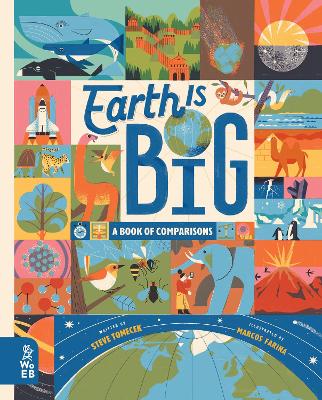
By Author / Illustrator
Steve Tomecek, Marcos Farina
Genre
Non Fiction
Age range(s)
7+
Publisher
What on Earth Publishing Ltd
ISBN
9781912920334
Format
Hardback
Published
02-09-2021
Synopsis
Earth is big! (compared to a frog)
Earth is small! (when it's hiding in a galaxy)
And that's not all. Earth is wet and dry, hot and cold, round and jagged, fast and slow. You get the idea. It depends how you look at it!
Get to know our planet in a whole new way by comparing it to a huge variety of other incredible things - from tiny particles to giant star clusters. Did you know soap bubbles are some of the roundest objects in the universe? Or that we humans are totally outnumbered by chickens? Or that the driest desert on Earth isn't scorching but freezing? Tour some of the most extreme places on the planet and beyond it, take a look at life forms from bacteria to elephants to redwood trees and explore what makes our planet the perfect home for us. You'll never see Earth the same way again!
Reviews
Kristen
Earth is Big is a colourful book of comparisons that puts our planet into perspective in its place in the universe and makes you think about it in a different way. The comparisons are thorough and not always what you might expect. For example, the first page discusses how big the Earth is compared to other planets and the next discusses how small it is compared to other planets.
The timeline of how Earth has changed since it was formed is detailed and full of facts. The book then goes on to talk about the inhabitants of earth - from plants to humans and insects - and how, compared to the length of time earth has existed, the inhabitants are relatively young. This helps to put into perspective for children the length of time the Earth has been around. The book continues with a series of contrasting comparisons such as cold/hot, wet/dry, fast/slow. Each double page is set out really clearly into sections within each of the comparisons, making the information easy to access.
There is a glossary at the back covering some of the trickier language in the book and also a note on converting metric to imperial units. This book would be great for adults to read with younger children or for slightly older children to access on their own. It would also be a great addition to the classroom as it would link to many topics including evolution, habitats, space and units of measurement in maths.
48 pages / Reviewed by Kristen Hopwood, teacher
Suggested Reading Age 7+
Other titles
-
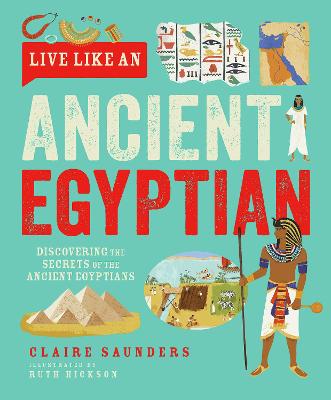 Live Like An Ancient Egyptian: Discovering the Secrets of the Ancient Egyptians
7+ Non Fiction 20241008
Live Like An Ancient Egyptian: Discovering the Secrets of the Ancient Egyptians
7+ Non Fiction 20241008
-
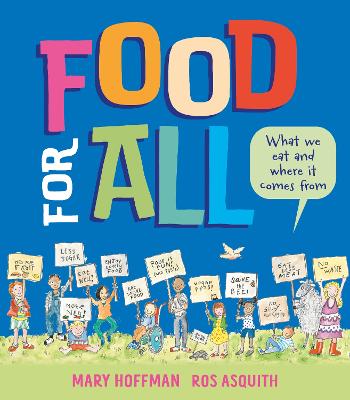 Food for All: What We Eat and Where it Comes From
7+ Non Fiction 20250403
Food for All: What We Eat and Where it Comes From
7+ Non Fiction 20250403
-
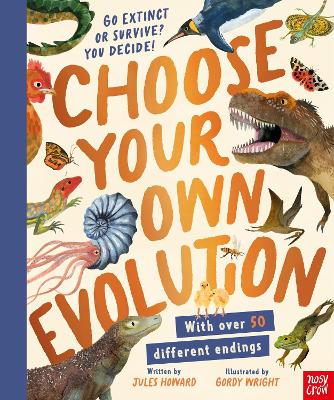 Choose Your Own Evolution: Go Extinct or Survive? You Decide!
7+ Non Fiction 20250605
Choose Your Own Evolution: Go Extinct or Survive? You Decide!
7+ Non Fiction 20250605
-
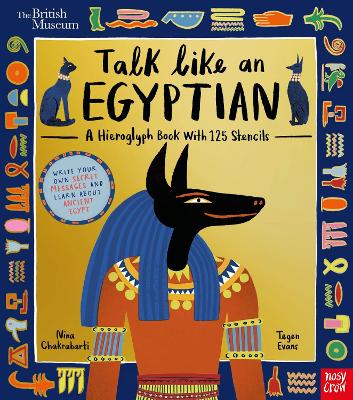 British Museum: Talk Like an Egyptian
7+ Non Fiction 20240912
British Museum: Talk Like an Egyptian
7+ Non Fiction 20240912
